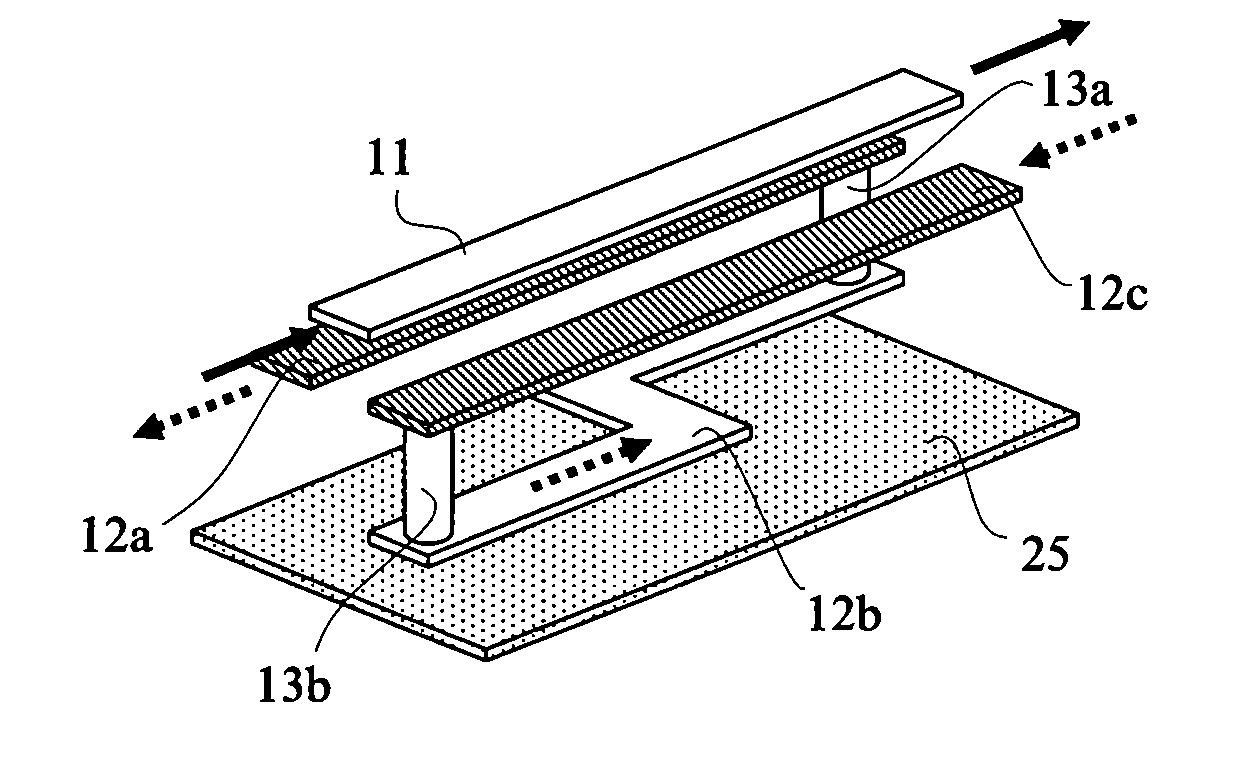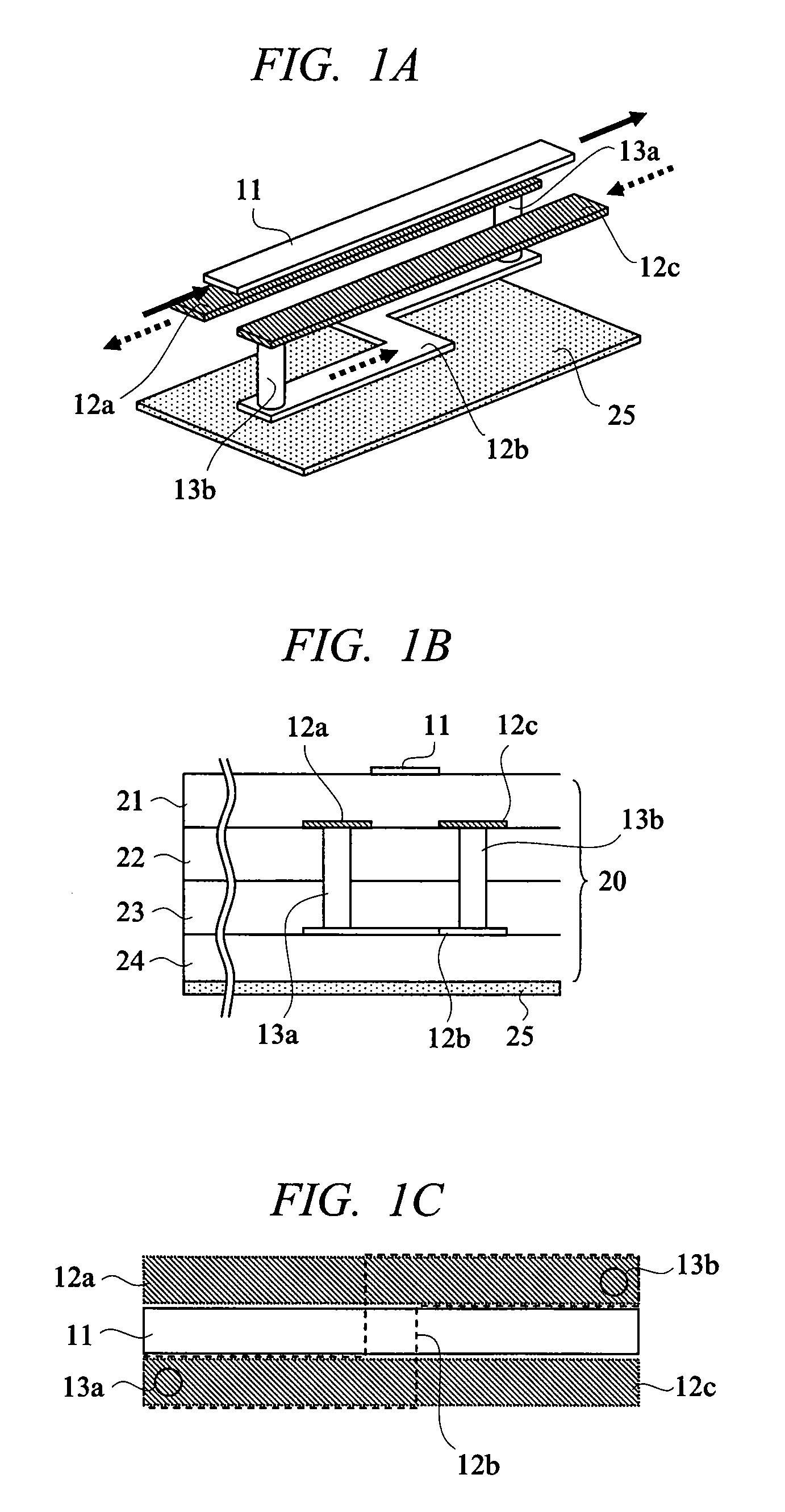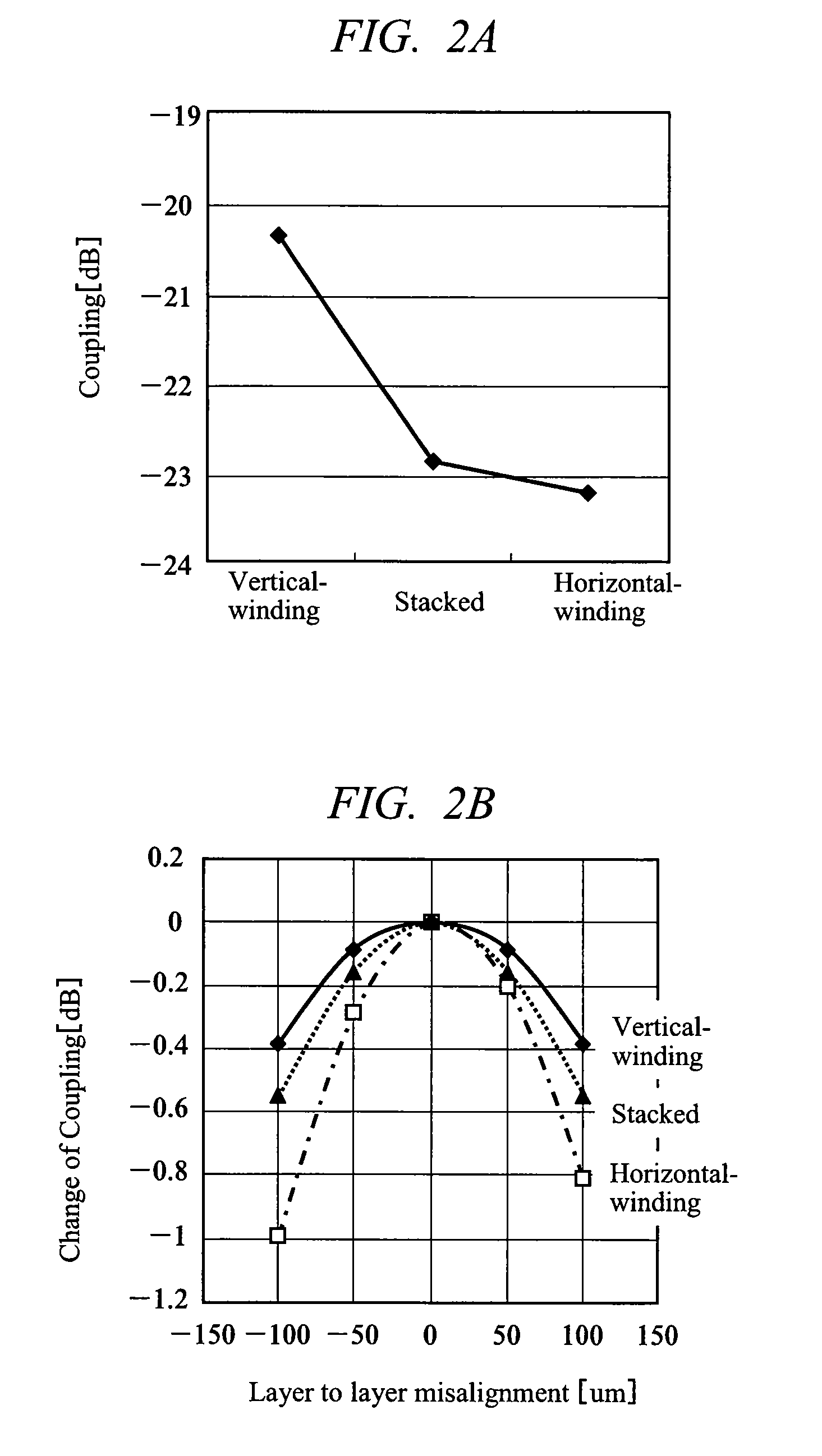Directional coupler and RF circuit module
a circuit module and directional coupler technology, applied in the direction of pulse generators, waveguides, pulse techniques, etc., can solve the problems of increased loss on the main line side, and achieve the effect of efficient generation of magnetic fields, and increased coupling per unit area
- Summary
- Abstract
- Description
- Claims
- Application Information
AI Technical Summary
Benefits of technology
Problems solved by technology
Method used
Image
Examples
first embodiment
[0051]FIGS. 1A to 1C show a structure of a directional coupler according to a first embodiment of the present invention. FIG. 1A is a perspective diagram of the directional coupler, FIG. 1B is a cross-sectional diagram thereof, and FIG. 1C is a top transparent diagram viewed from top thereof. As can be seen from FIG. 1B, the directional coupler is formed of a multi-layer substrate 20 composed of four insulating layers 21 to 24. In the first embodiment, a glass ceramic multi-layer substrate having a relative permittivity of 7.8 and tanδ of 0.002 is used for the multi-layer substrate. Each insulating film has a thickness of 150 μm. The multi-layer substrate 20 is provided with a ground plane 25 on the back surface. Conductivity of a wiring conductor including the ground plane is 4×107S / m, and a thickness thereof is 15 μm. A main-line 11 is provided on a front surface, which is an opposite side of the back surface where the ground plane of the multi-layer substrate is provided. A sub-l...
second embodiment
[0061]A directional coupler according to a second embodiment has a structure in which the directional coupler according to the first embodiment is used and directivity is adjusted further. The structure of the directional coupler according to the second embodiment is similar to that of the directional coupler according to the first embodiment in the number of the substrate layers, the insulating layer, the thickness and material of the conductor, the line width of the sub-line, and the line length of the main-line contributing to the coupling. A width of the main-line and a distance between portions running parallel of lines forming the sub-line are parameters for improving the directivity.
[0062]FIG. 3A is a graph showing dependence of the coupling and the directivity on the width of the main-line. FIG. 3B is a graph showing dependence of the coupling and the directivity on the distance between the sub-lines. Both of these graphs represent results obtained through a three-dimensiona...
third embodiment
[0065]A directional coupler according to a third embodiment is achieved by further applying the structure of the vertical winding type described in the first embodiment. FIGS. 4A to 4C show an example of a structure of a directional coupler according to the third embodiment of the present invention. FIG. 4A is a perspective diagram of the directional coupler, FIG. 4B is a cross-sectional diagram thereof, and FIG. 4C is a top transparent diagram viewed from top thereof. The number of substrate layers, insulating layer, thickness and material of the conductor, width of the main-line and the sub-line, a line length of the main-line contributing to coupling, and the like forming the directional coupler according to the third embodiment are identical to those according to the first embodiment. Difference between the third embodiment and the first embodiment is that, in the third embodiment, as shown in FIGS. 4A to 4C, a line 12a of the sub-line is provided on a layer immediately under th...
PUM
 Login to View More
Login to View More Abstract
Description
Claims
Application Information
 Login to View More
Login to View More - R&D
- Intellectual Property
- Life Sciences
- Materials
- Tech Scout
- Unparalleled Data Quality
- Higher Quality Content
- 60% Fewer Hallucinations
Browse by: Latest US Patents, China's latest patents, Technical Efficacy Thesaurus, Application Domain, Technology Topic, Popular Technical Reports.
© 2025 PatSnap. All rights reserved.Legal|Privacy policy|Modern Slavery Act Transparency Statement|Sitemap|About US| Contact US: help@patsnap.com



